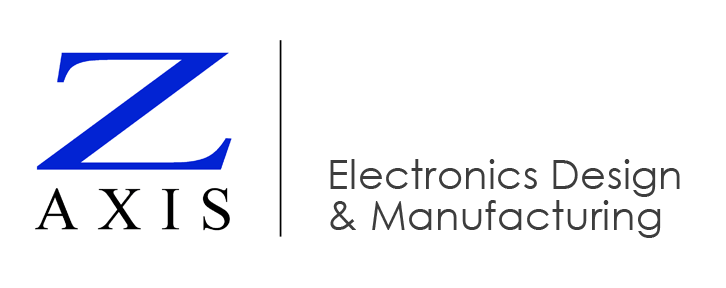PCB design mistakes can increase the cost of your printed circuit boards and complicate manufacturability. This video covers the 10 most common mistakes that Z-AXIS sees and explains how to avoid them.
Number 1: Don’t place parts too close to the edge of the board. Follow industry-standard tolerances and leave a quarter-inch on two parallel edges so that we can hold your board without rails or fixtures. Odd-shaped boards also add costs because we need to create fixtures to handle them.
Number 2: Don’t use more layers than are necessary. It’s easier for a designer to add more layers, but boards with more than two layers are more expensive.
Number 3: Don’t put parts on both sides of a board if you can avoid it. Putting most parts on one side and just a few on the other means we’ll have to flip your board and repeat a series of steps, doubling all set-up costs.
Number 4: Don’t put SMT pads too close together. Otherwise, solder masks could flow together, causing parts to leave their pads and move to the center of the solder.
Number 5: Don’t intersect an SMT pad with the solder mask opening for a via. Otherwise, solder paste could flow down the via and starve the solder joint for the surface mount part.
Number 6: Don’t put parts too close together. Leave enough room so that the pick-and-place process won’t cause collisions that can result in lower yields and higher costs.
Number 7: Don’t leave too little room for selective soldering. If surface-mount parts are on one side and through-hole parts are on the other, soldering the through-hole parts could wash off the surface-mount parts.
Number 8: Don’t use copper traces with significantly different weights. A lower copper weight heats up more quickly and could cause the part to stand on end like a tombstone.
Number 9: Be careful when creating your own component footprints. It’s easy to make mistakes, so please follow the footprints from component manufacturers.
How to Avoid Common PCB Mistakes
Number 10: Don’t design the entire board to the limit of PCB design rules. Remember that building a board is an exercise in probability. When you push the envelope unnecessarily, you increase risks and add expenses.
Now that you know about the 10 most common PCB design mistakes, you can take steps to avoid them. Let us know how our engineers can help.
